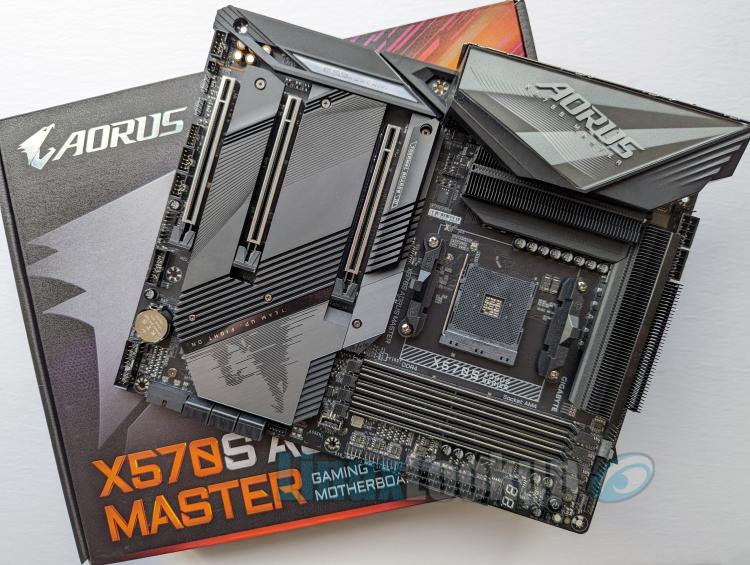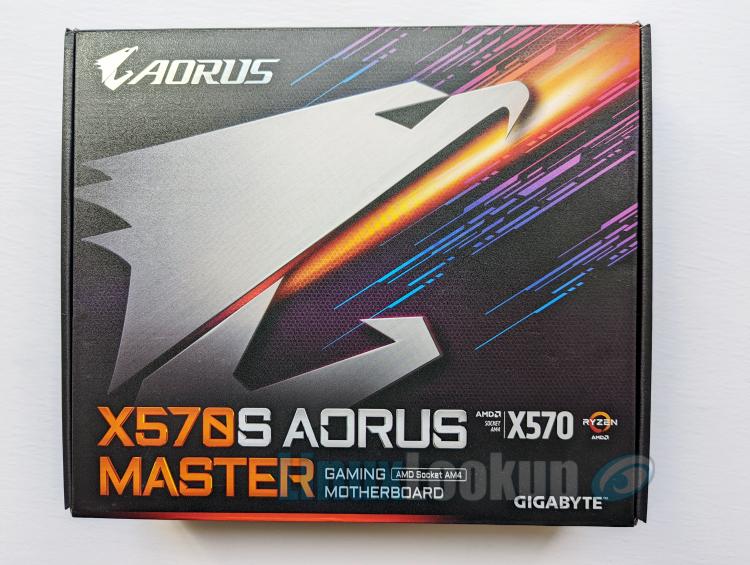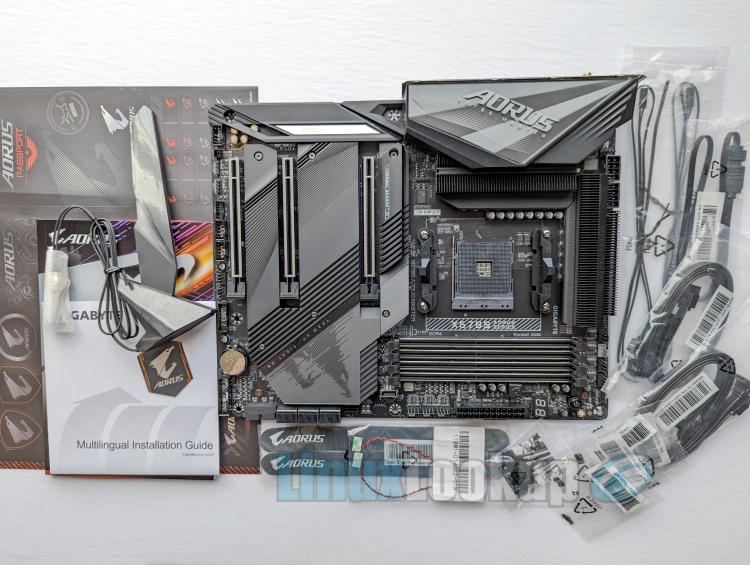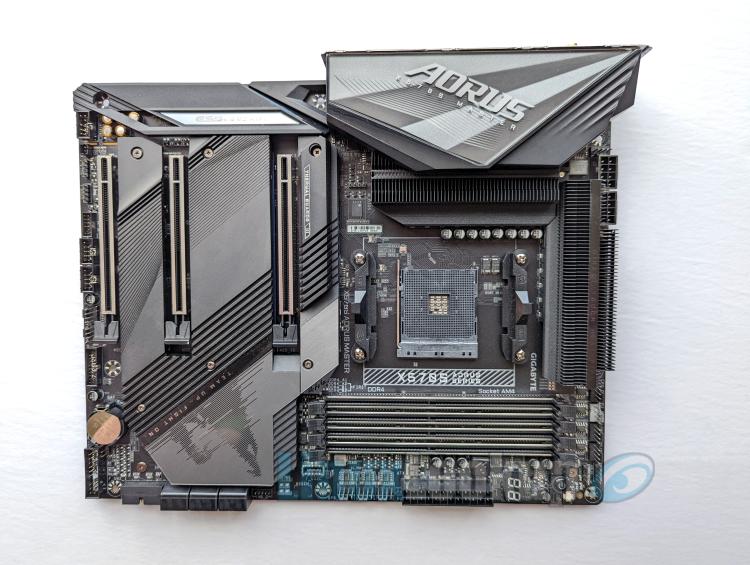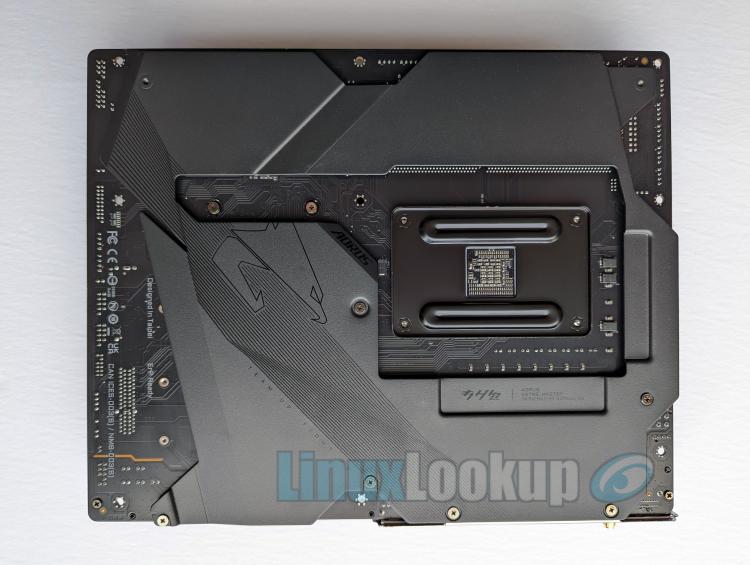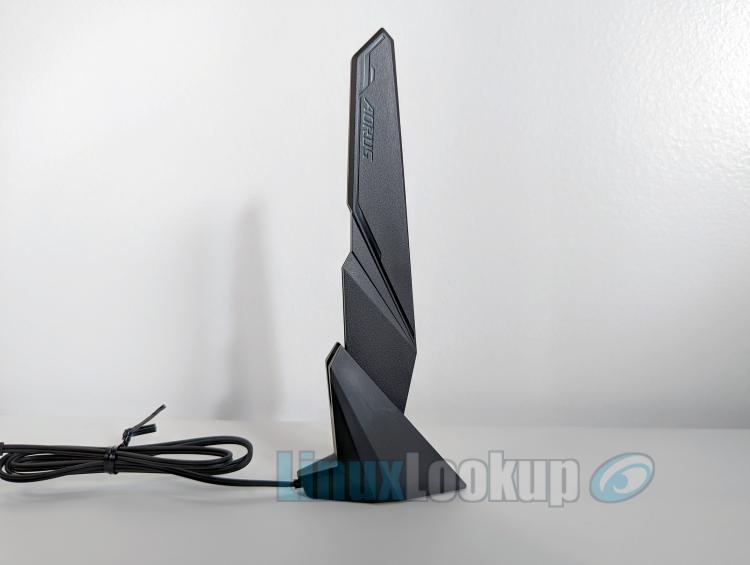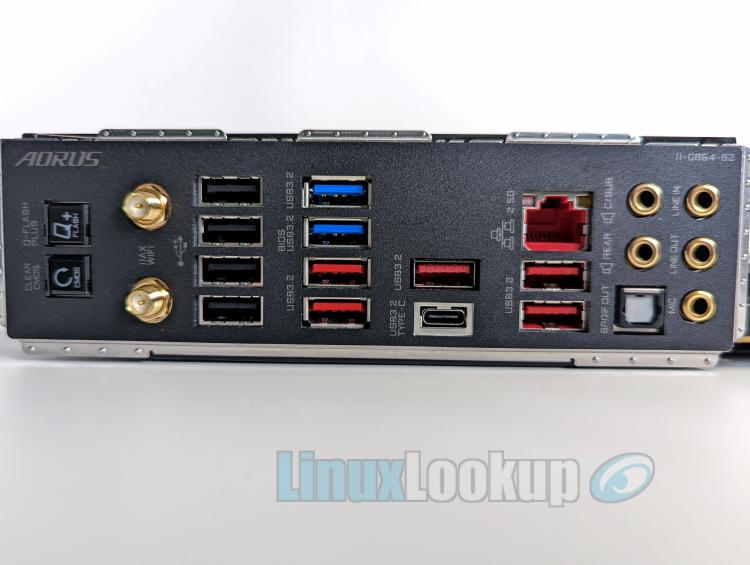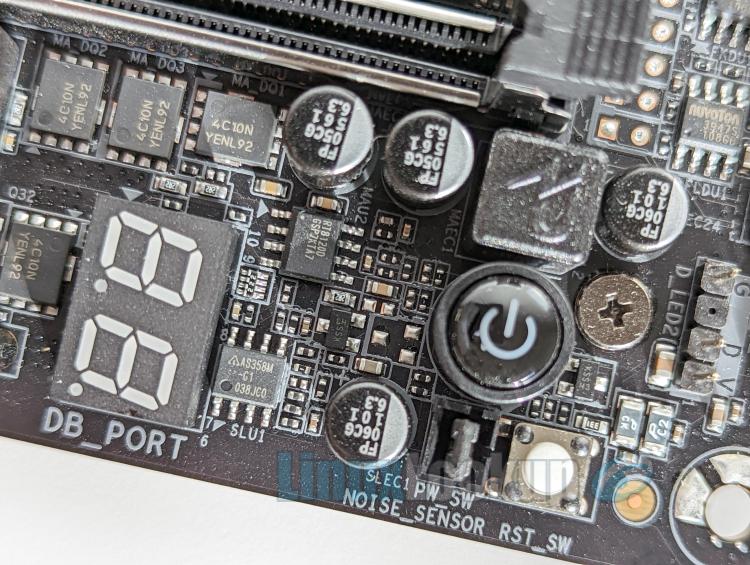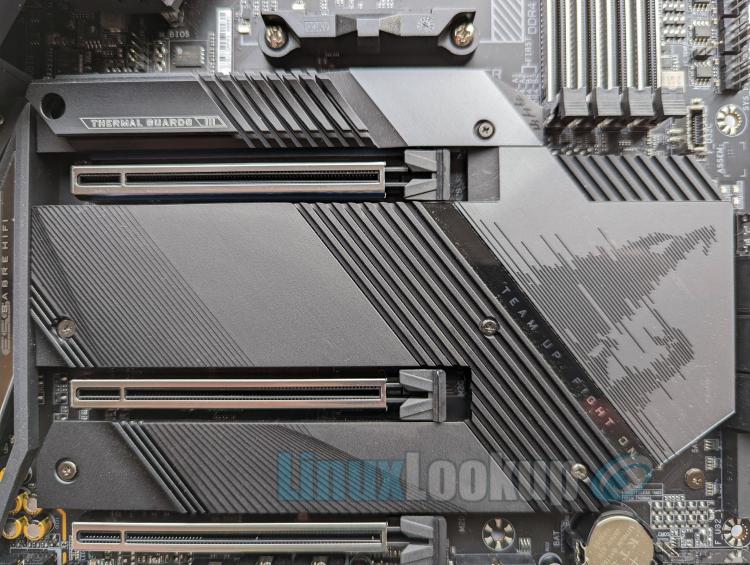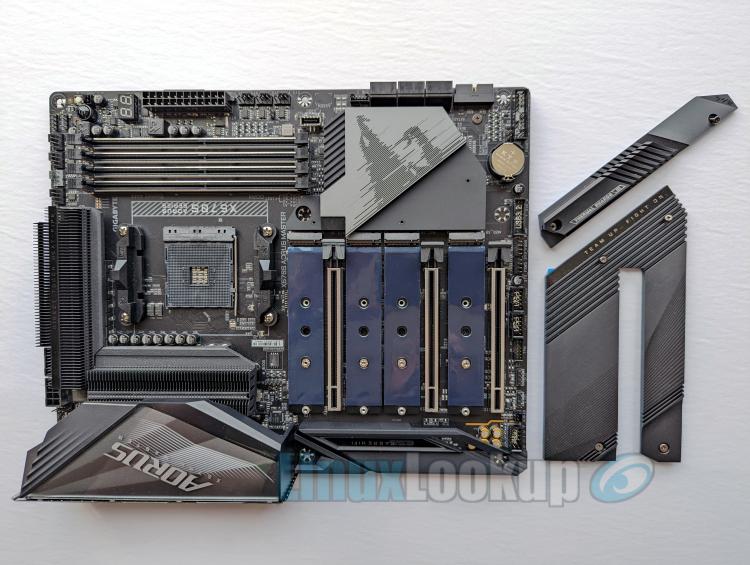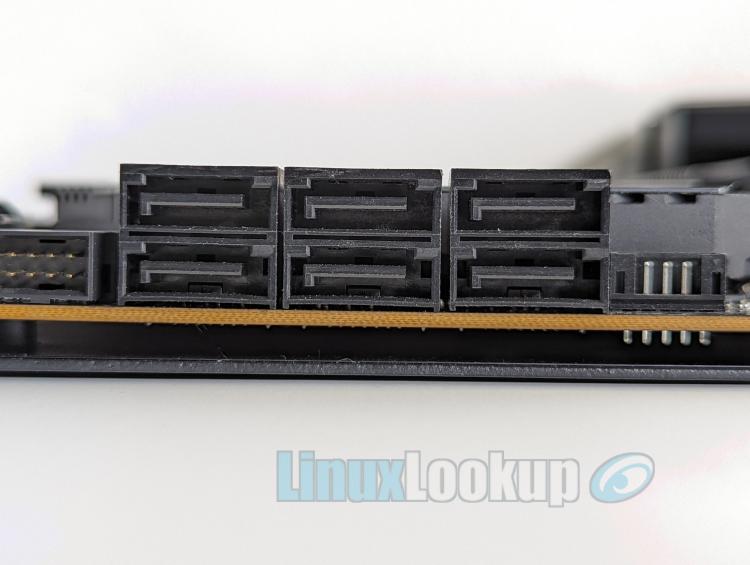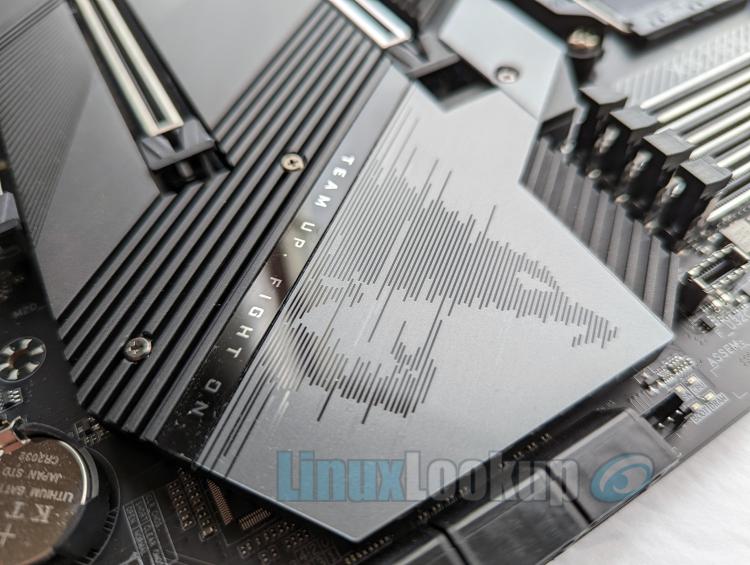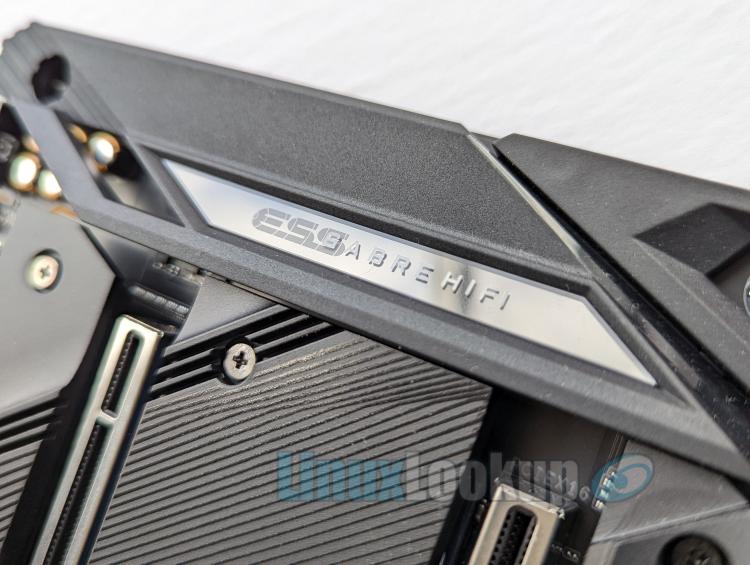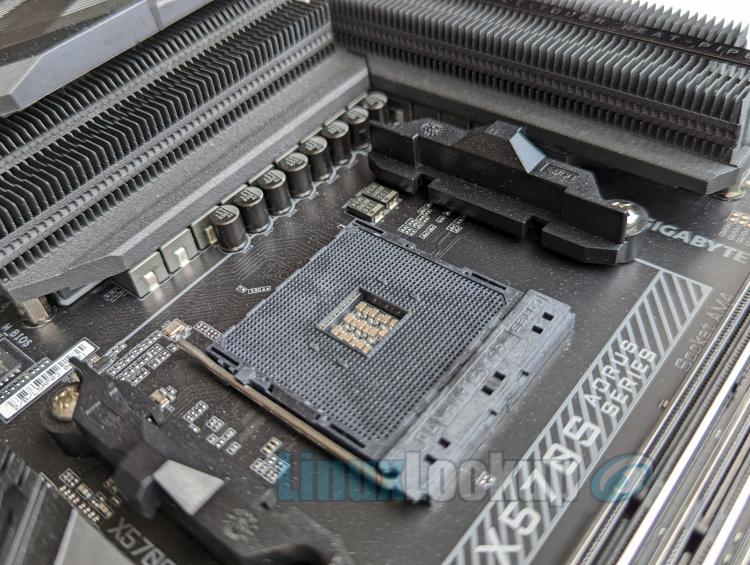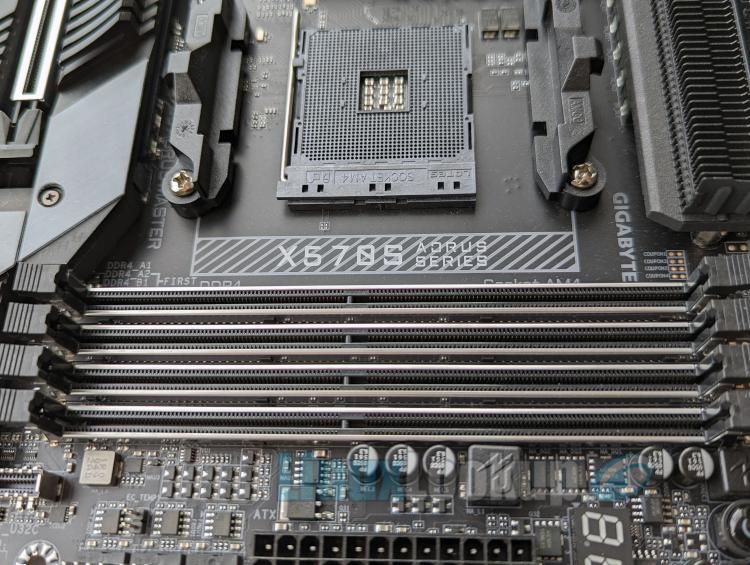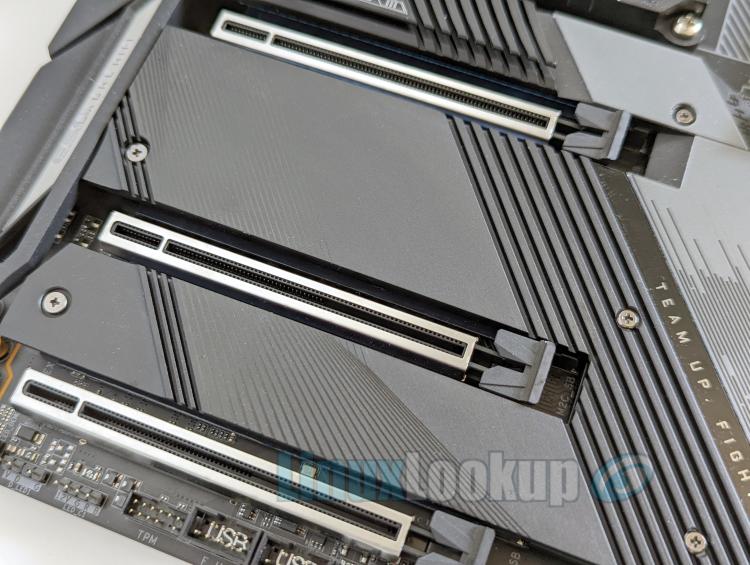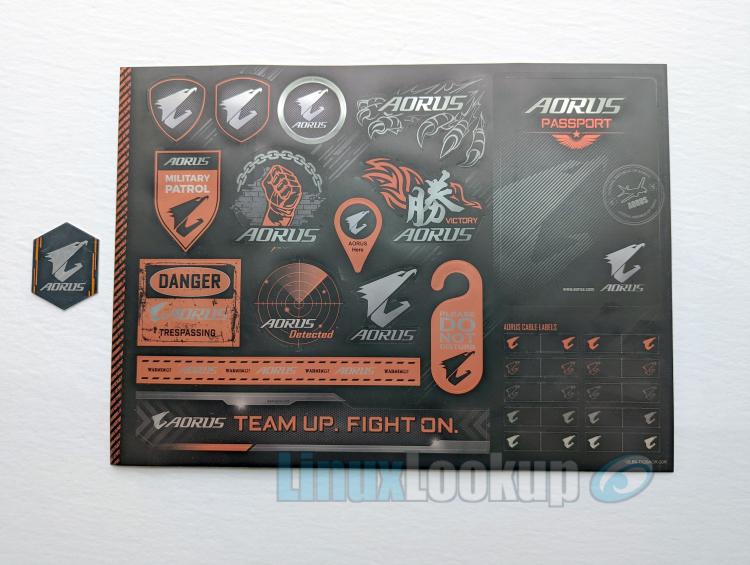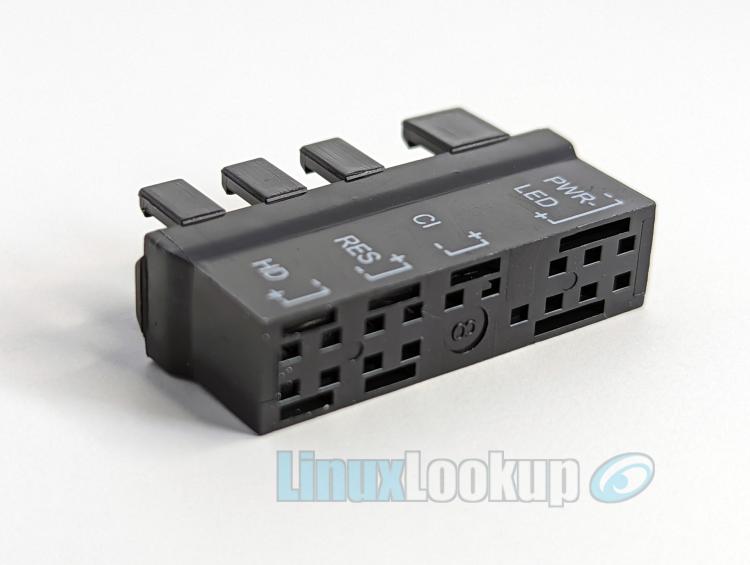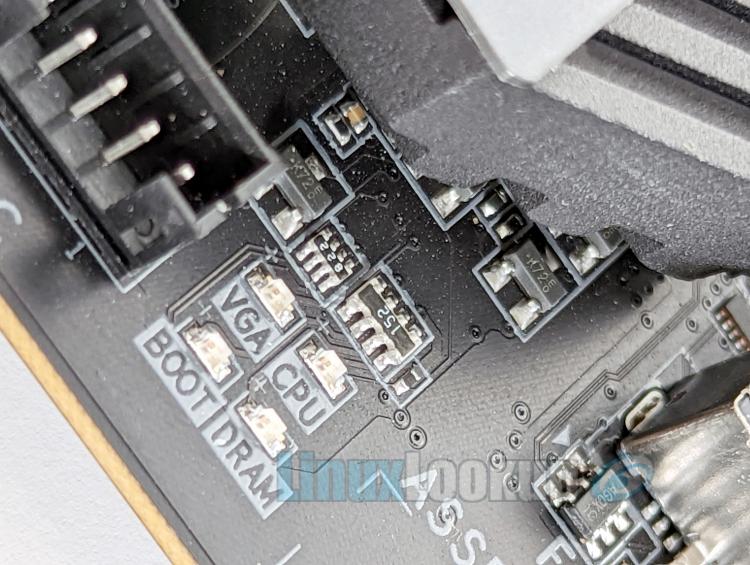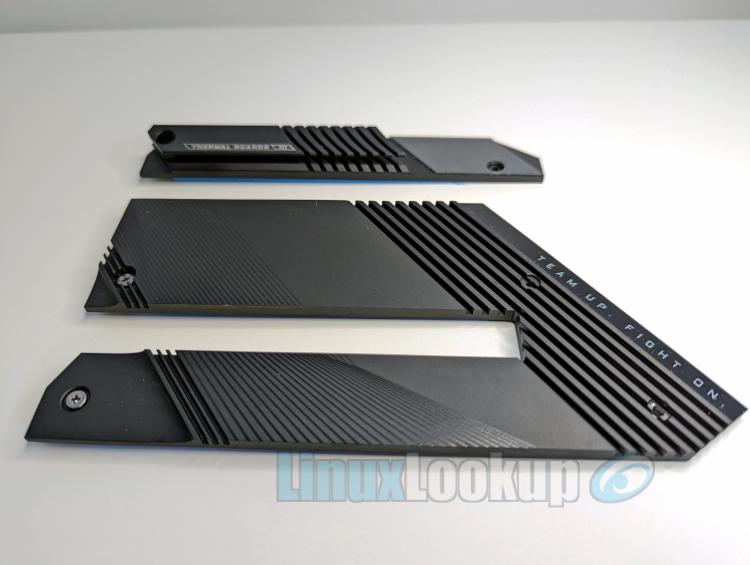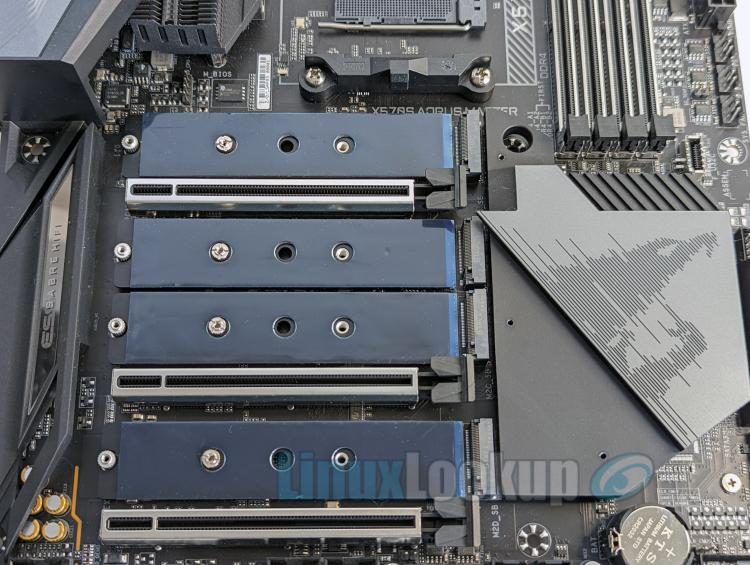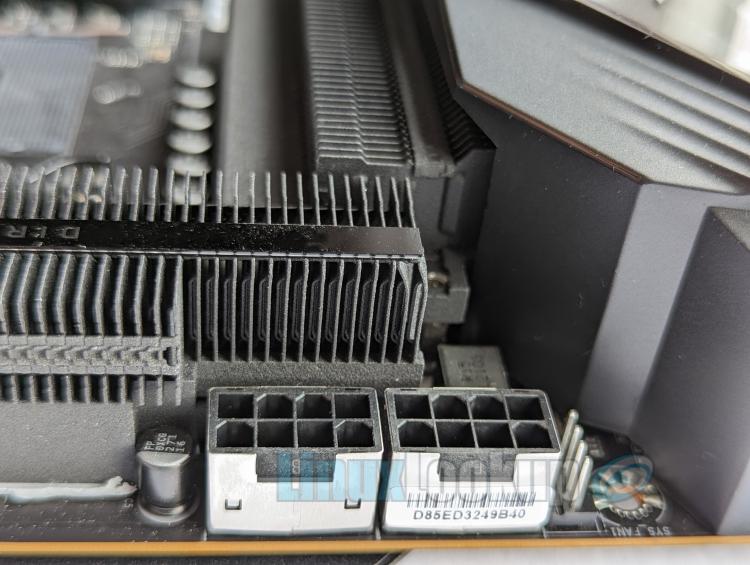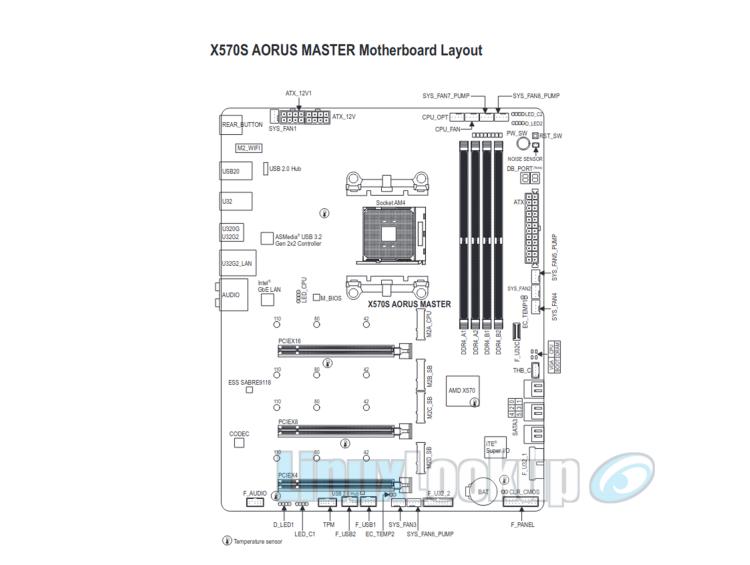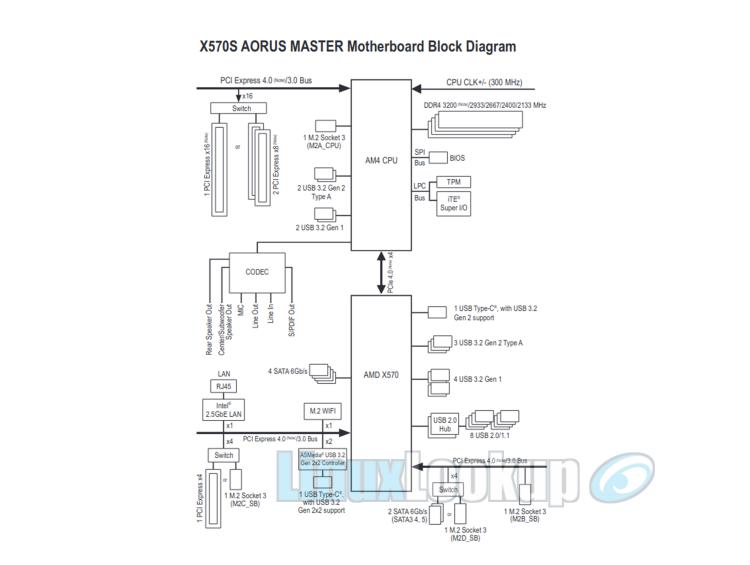GIGABYTE X570S AORUS MASTER Motherboard Review
The GIGABYTE X570S AORUS MASTER Motherboard falls under their gaming product stack as a flagship model targeted towards enthusiasts, offering high performance alongside advanced feature sets.
We're going to outline all progressive improvements on this new X570S AORUS MASTER and also do a comparison verses the previous generation X570 AORUS MASTER later on in this review.
Currently the GIGABYTE X570S AORUS MASTER Motherboard is available at online retailers for $331.99 USD — a sizable price drop of nearly $60 since launch.
Included in the retail box is everything required for motherboard installation and connectivity. Four latching SATA cables (two 90-degree angled and two straight), external WiFi / Bluetooth antenna, a 4-pin RGB LED lighting strip extension cable, four individually packed M.2 screws, one noise sensor cable, two thermal sensor cables, a G-connector, quick start installation guide and multi-language manual.
For some additional flair, enclosed is also an AORUS sticker pack and metal case badge.
In previous GIGABYTE Motherboard reviews I've expressed my gratitude towards the G-connector. If you're not familiar with the G-connector, it assists with attaching front panel headers where physical space or visibility is limited. Simply clip your front panel wires to the G-connector as per the clearly marked pin assignments and then attach to the motherboard front panel header. Though other manufactures have had similar connectors over the years, GIGABYTE is one of the few still including this handy little component with their motherboards.
Aesthetically the GIGABYTE X570S AORUS MASTER offers a darkened theme comprised mostly of matte black finishes with a few flat grey accents. The design is clean and any discernible branding is kept minimal, with only an AORUS logo on top of the rear I/O shroud which features integrated RGB lit wave pattern creating a splash of colour.
Weight of this board is considerably heavier than an average motherboard, mainly due in part to the metal base plate cover — not only does this cover offer an aggressive aesthetic along the backside, it also provides functional heat dissipation and physical rigidity.
The external WiFi / Bluetooth Antenna is black in colour with a cyberpunk themed design. From a usage perspective the antenna is positional with four angles, bottom base is covered in soft rubber to prevent scratching and slippage when placed on a flat surface.
Connectivity on the back panel is protected by a mounted I/O shield. Located on the left side are two features we typically see reserved for high-end GIGABYTE motherboards, a Q-Flash Plus Button that allows BIOS updates when the power connector is connected but the system is not powered on, along with a Clear CMOS Button to reset the CMOS values to factory defaults without having to pull the board battery.
Adjacent to these buttons are the SMA antenna connectors (2T2R) for WiFi 6E / Bluetooth 5.2, four USB 2.0/1.1 ports (black), two USB 3.2 Gen 1 ports (blue), two USB 3.2 Gen 2 Type-A ports (red), a single USB Type-C port with USB 3.2 Gen 1 support, 2.5GbE LAN port (RJ-45) and another two USB 3.2 Gen 2 Type-A ports (red). Far right are gold-plated high definition audio jacks supporting 2/4/5.1/7.1-channel configurations, along with an optical S/PDIF audio out connector.
Looking inward at on-board connectors you'll find a one USB Type-C header with USB 3.2 Gen 2 support, two USB 3.2 Gen 1 headers, two USB 2.0/1.1 headers, and a Thunderbolt add-in card connector. Plus two RGB LED strip headers, two addressable LED strip headers in addition to a variety of fan/water cooling headers.
Continuing with on-board features, the GIGABYTE X570S AORUS MASTER offers some great diagnostic tools such as status LEDs indicating whether the CPU, memory, graphics card, and operating system are working properly after system power-on.
Also a POST Code LED for debugging and quick buttons for power and reset. These internal power and reset buttons allow users to quickly turn on/off or reset the computer in an open-case environment when they want to change hardware components or conduct hardware testing. Functionality of the reset button may also be remapped within the BIOS to perform four different tasks.
Integrated storage options on the X570S AORUS MASTER are plentiful with a total of four M.2 sockets all running at PCIe Gen4 x4 speeds.
Similar to the GIGABYTE X570S AERO G Motherboard, availability of the PEIEX4, M.2 and SATA connectors may be affected by the type of device installed in the M.2 sockets. More specifically, the M2D_SB connector shares bandwidth with the SATA3 4, 5 connector. The M2C_SB connector also shares bandwidth with the PCIEX4 slot, thus causing PCIEX4 to become unavailable when a device is installed in the M2C_SB connector. Before you go out and purchase four NVMe drives, check the product manual for an intuitive table outlining these arrangements.
All four M.2 sockets include a passive heatsink with thermal pad backing for improved operating temperatures and throttling prevention as NVMe drives typically run hot.
Three of the four slots feature a Thermal Guard II heatsink, where as the upper most slot (M2A_CPU) is double-sided Thermal Guard III design — offering 2.6x optimized heat dissipation surface.
Six internal Serial ATA 6Gb/s connectors are located towards the bottom corner of the board. These SATA connectors are stacked two high with a 90-degree orientation and offer support for RAID 0, RAID 1, and RAID 10.
There isn't any difference between the AMD X570 chipset of years past and the recently launched X570S motherboards. You're still getting all the greatness of an AMD X570 motherboard, but with a refresh. Regarding GIGABYTE naming, the "S" suffix in X570S represents silent. To accomplish this, the chipset fan has been removed and substituted with a heatsink to provide passive cooling instead of active cooling.
In the case of the X570S AORUS MASTER, GIGABYTE has stylized the chipset heatsink by etching the AORUS logo on top — a nice little embellishment.
Audio on this motherboard is provided by an on-board Realtek ALC1220-VB Audio CODEC, ESS SABRE Hi-Fi 9118 DAC, along with the addition of audiophile grade WIMA capacitors. I'm by no means an audio engineer so the sound quality is great by my standards.
Power delivery on the X570S AORUS MASTER is of a 14+2 phase VRM design and utilizes a brand new louvered stacked-fin heatsink for cooling, with an extra large 8mm heatpipe helping dissipate the heat on MOSFETs — more than capable of efficiently powering a overclocked AMD Ryzen 9 5950X processor.
Both the EPS power connector and Main power connector utilize solid plated pins for improved lifespan, along with a reinforced metal jacket over the 8+8pin (2x4 12V) CPU power connectors for extra durability.
Though this AMD Socket AM4 motherboard supports all AMD Ryzen 2000, 3000 and 5000 Series processors, including 2nd-generation or higher AMD G-Series processors, I'd highly recommend pairing with an AMD 5000 Series CPU.
There are four single-latch DIMM sockets optimized for daisy-chain routing, supporting up to 128GB of DDR4 system memory with a Memory Frequency of up to 5400MHz (O.C).
Yet again another premium feature on all four DIMM sockets is the addition of Memory Armor which helps prevent unnecessary damage to the PCB by inhibiting bend caused by applying excessive downward force when inserting modules into the slots.
As you'd expect, expansion slots consist of three full-length PCIe 4.0 slots. The top slot (PCIEX16) is PCIe 4.0 x16 and the middle slot (PCIEX8) is PCIe 4.0 x8. Both are integrated in the CPU, however, the PCIEX8 slot shares bandwidth with the PCIEX16 slot so when the PCIEX8 slot is populated, the PCIEX16 slot operates at up to x8 mode.
The bottom slot (PCIEX4) supports PCIe 4.0/3.0 x4. Integrated in the chipset, the PCIEX4 slot shares bandwidth with the M2C_SB connector and as I've mentioned previously, PCIEX4 slot becomes unavailable when a device is installed in the M2C_SB connector.
Multi-graphics technology such as AMD Quad-GPU CrossFire and 2-Way AMD CrossFire are supported, however, for optimum performance, if only one PCIe graphics card is to be installed, you'll want to install it in the PCIEX16 slot. All three PCIe slots feature PCIe Armor to reinforce and provide improved retention for heavy graphics cards.
Linux Compatibility
I have confirmed the latest stable release of Ubuntu 20.04.3 LTS (Focal Fossa) Desktop successfully installs and operates under default conditions. All on-board feature sets have been tested to function correctly out of the box. No BIOS update was required prior to installation of the AMD Ryzen 5000 Series CPU.
Compatibility Test Conditions
- Processor: AMD Ryzen 7 5800X Eight-Core @ 3.80GHz (8 Cores / 16 Threads)
- Storage: NVMe M.2 SSD PCIe Gen4 x4
- Memory: 64GB DDR4-3600
- Distribution: Ubuntu 20.04.3 LTS (64-Bit) Desktop
- Linux Kernel: 5.11.0-40-generic
- OS Install Options: Default
- BIOS Version: F3c
- BIOS Settings: Default
- Usage Tests: Desktop, KVM, VirtualBox, Steam, Krita
- Overall Result: Stable
Gallery
Conclusion
The Good - Pros- Improved power delivery & thermal efficiency
- Four NVMe PCIe 4.0 x4 M.2 sockets
- Reinforcement on all connectors with stress points
- X570S substitutes chipset fan with a heatsink
- Gold-plated audio jacks are beneficial (marginally)
- Noise & thermal sensors to adjust fans speeds
- Ten fan/water cooling headers
- G-Connector is included
- Metal base plate cover
- WiFi 6E on-board
The Bad - Cons
- Some rear USB ports should've been sacrificed for addition of a 10GbE port
The Ugly - Issues
- N/A
The Verdict - Opinion
Undoubtedly the X570S AORUS MASTER is a refresh of the X570 AORUS MASTER which bares a mutual designation. In comparison, notable improvements on this new X570S is the additional M.2 connector for a total of four, increased 16 phase power with updated thermal design, DDR4 5400 support, WiFi 6E with Bluetooth 5.2, 5 x USB 3.2 ports on rear panel, passive chipset cooling and a modernized visual design. This motherboard has everything you could want right now, but GIGABYTE also missed an opportunity to sacrifice some of the USB ports on the rear I/O panel for a 10GbE port.
In contrast, the aging X570 AORUS MASTER has one less M.2 connector for a total of three, 14 phase power design, DDR4 4400 support, WiFi 6 with Bluetooth 5.0, less 2 x USB 3.2 ports on rear panel and active chipset cooling. For what is lacking, it does gain a GbE LAN port, more RGB lighting and support for NVIDIA Quad-GPU SLI and 2-Way NVIDIA SLI technologies.
At the time of writing this review, cost differential between these motherboards hovers around $25 — both are excellent boards, but I'd side with choosing the new X570S AORUS MASTER.
